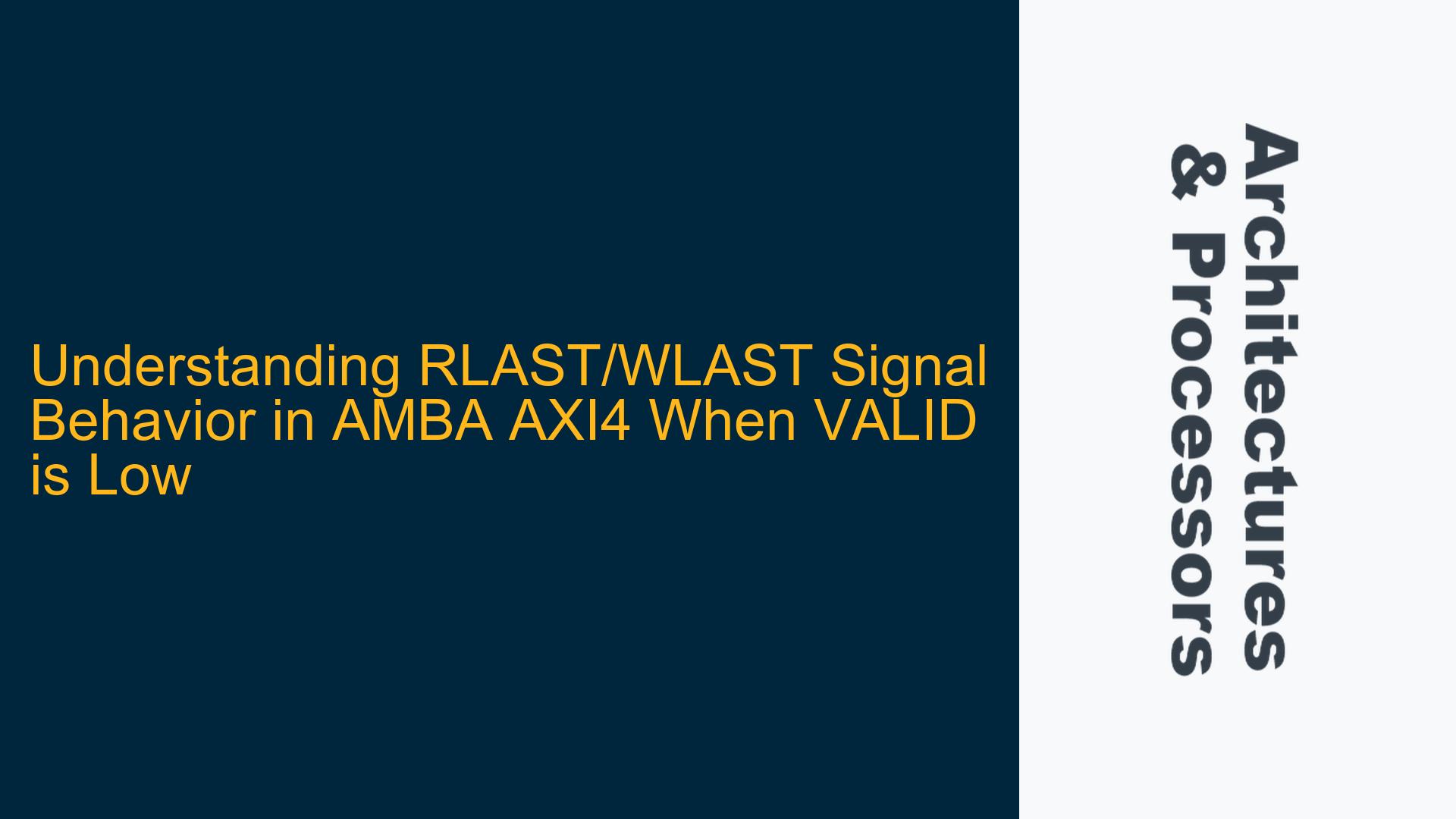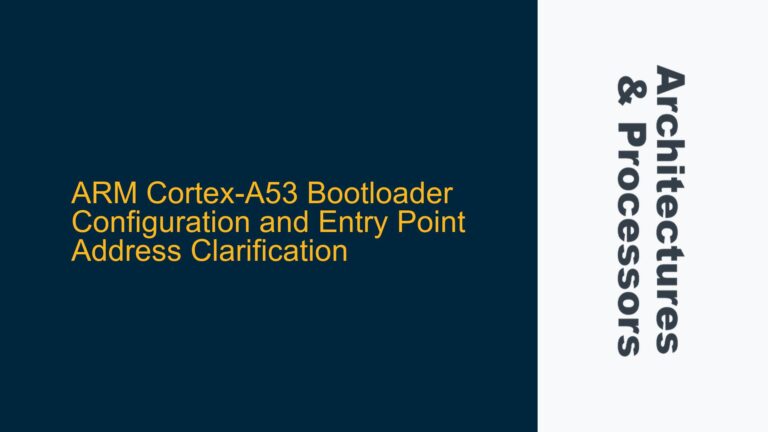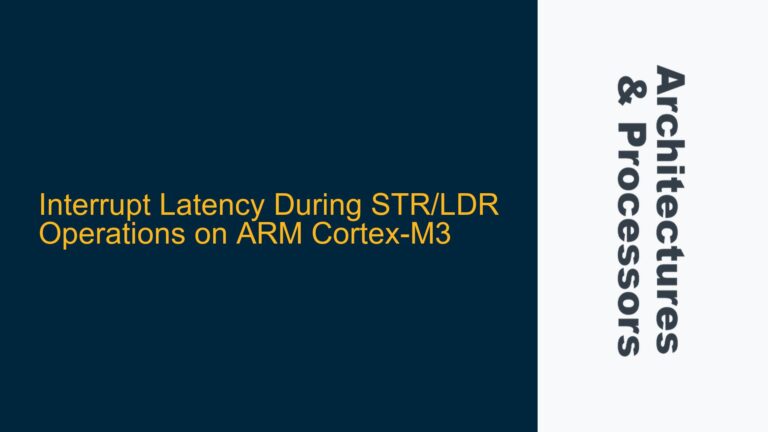RLAST/WLAST Signal Ambiguity During Non-Transactional States
The behavior of the RLAST and WLAST signals in the AMBA AXI4 protocol when no transaction is pending or when the VALID signal is low is a critical aspect of ensuring proper communication between master and slave devices. The AMBA AXI4 specification (IHI0022E) states that the slave must assert the RLAST signal when it is driving the final read transfer in a burst, and a similar statement is made for the WLAST signal during write transfers. However, the specification does not explicitly clarify the state of these signals when no transaction is active or when the VALID signal is low. This ambiguity can lead to misinterpretation and potential design or verification issues in AXI4-based systems.
The confusion arises from the interaction between the VALID, READY, RLAST, and WLAST signals. The VALID signal indicates that the master is driving valid address, control, or data information, while the READY signal indicates that the slave is ready to accept this information. The RLAST and WLAST signals are used to denote the last transfer in a burst for read and write transactions, respectively. When no transaction is pending, or when the VALID signal is low, the state of RLAST and WLAST is not explicitly defined in the specification, leading to questions about whether these signals should be driven low, high, or left in an undefined state.
This issue is particularly relevant when converting between AXI4 and AXI4-Lite protocols. AXI4-Lite is a simplified version of AXI4 that supports only single-beat transfers, meaning that every transfer is effectively the last transfer in a burst. This implies that RLAST and WLAST would always be asserted for AXI4-Lite transactions. However, the specification does not clearly state whether these signals should remain asserted even when no transaction is active or when the VALID signal is low.
VALID Signal Low State and Its Impact on RLAST/WLAST
When the VALID signal is low, the AMBA AXI4 specification states that all signals on the channel, except for the READY signal, are undefined. This includes the RLAST and WLAST signals. The READY signal, which is driven by the slave, can still be valid even when the VALID signal is low, as it indicates the slave’s readiness to accept a transaction. However, the state of RLAST and WLAST is not explicitly defined in this scenario.
The ambiguity arises because the specification does not mandate a specific behavior for RLAST and WLAST when VALID is low. This can lead to different interpretations by designers and verification engineers. Some may assume that RLAST and WLAST should be driven low when no transaction is pending, while others may interpret the specification to mean that these signals can remain high or be left in an undefined state.
This lack of clarity can cause issues in both design and verification. For example, if a design assumes that RLAST and WLAST should be driven low when VALID is low, but the actual implementation leaves these signals high, it could lead to incorrect behavior in the system. Similarly, verification environments that do not account for this ambiguity may fail to catch potential issues, leading to bugs that only manifest in real-world operation.
Resolving RLAST/WLAST Signal Behavior Through Protocol Compliance and Verification
To address the ambiguity surrounding the behavior of RLAST and WLAST signals when VALID is low, it is essential to follow a systematic approach that ensures compliance with the AMBA AXI4 specification while also accounting for practical implementation considerations. This involves a combination of protocol analysis, design best practices, and thorough verification.
First, it is important to recognize that the AMBA AXI4 specification explicitly states that all signals on a channel, except for READY, are undefined when the VALID signal is low. This means that RLAST and WLAST can legally be in any state when VALID is low, including high, low, or undefined. However, to avoid potential issues, it is recommended to drive RLAST and WLAST low when no transaction is pending or when VALID is low. This approach ensures that these signals are in a known state, reducing the risk of misinterpretation by other components in the system.
In the context of AXI4-Lite, where all transfers are single-beat and RLAST/WLAST are always asserted, it is still advisable to drive these signals low when no transaction is active. This maintains consistency with the broader AXI4 protocol and avoids potential confusion in systems that may include both AXI4 and AXI4-Lite components.
From a verification perspective, it is crucial to account for all possible states of RLAST and WLAST when VALID is low. This includes scenarios where these signals are high, low, or undefined. Verification environments should be designed to test these edge cases, ensuring that the system behaves correctly regardless of the state of RLAST and WLAST when no transaction is pending. This can be achieved through the use of constrained random testing, where the state of RLAST and WLAST is randomized during periods when VALID is low.
Additionally, formal verification techniques can be employed to prove that the design adheres to the AMBA AXI4 specification under all conditions. Formal verification tools can exhaustively explore all possible states of the system, including those where RLAST and WLAST are in undefined states, ensuring that the design behaves correctly in all scenarios.
In summary, while the AMBA AXI4 specification does not explicitly define the behavior of RLAST and WLAST when VALID is low, it is recommended to drive these signals low during non-transactional states to ensure consistency and reduce the risk of misinterpretation. Verification environments should be designed to account for all possible states of these signals, ensuring that the system behaves correctly under all conditions. By following these best practices, designers and verification engineers can avoid potential issues and ensure robust, reliable operation of AXI4-based systems.





